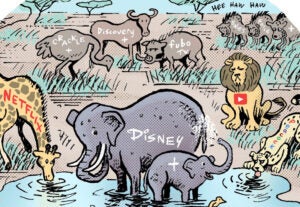![]() Rubicon Project’s stock rose over 20% in after hours trading following the announcement that the company posted a record quarter.
Rubicon Project’s stock rose over 20% in after hours trading following the announcement that the company posted a record quarter.
That’s good news for a supply side platform that has struggled to educate Wall Street of its value. Rubicon Project hoped its IPO would give it a market cap of $671 million. The current market cap is little more than half that, $367 million.
“To say we’re doing education is a dramatic understatement for sure,” CEO Frank Addante said. “This market is growing so fast, and it’s so dynamic, that the rate of growth is outpacing the rate of education.”
A record quarter is still relative for Rubicon Project, which went public earlier this year. But the company showed strong growth both year-over-year and compared to Q2.
Third-quarter revenue rose 60% year-over-year to $32.2 million. That’s 13% higher than last quarter, when Rubicon reported revenues of $28.3 million. That quarter also posted less growth, just 49% year over year.
The company’s managed revenues, or amount of money flowing through Rubicon’s platform, rose 43% year over year. Within that, RTB outpaced the growth of managed revenues as a whole, going up 75%. “Ongoing momentum in open RTB auction technologies” were among the factors contributing to a strong quarter, Addante said.
Within those managed revenues, mobile grew 300% year over year. Rubicon’s product includes auctions and direct orders for mobile, both on mobile web and in-app. Through its partnership with InMobi, 60 DSPs now have access to InMobi’s inventory. Rubicon said it plans to focus on native mobile in 2015.
Video is another story. After touting its beta video product last quarter, Rubicon apparently didn’t like what it saw. It says it can’t find enough quality video inventory to run through its platform. Addante expects slow growth for the time being.
“A large amount of today’s exchange video is substandard, and not acceptable,” Addante said. “We will expect more measured growth until we see more quality video inventory.”
One reason for the low quality, Addante said, stems from what its customer base isn’t selling. Rubicon targets “top 500” publishers, most of which sell all their premium video offerings directly. So while opportunity exists for Rubicon to enter video through its orders business, right now the company sees less opportunity in video exchanges.
Rubicon continued to make its pitch to investors in the call, comparing its business to the “stable and predictable” software-as-as-service businesses like Salesforce and Oracle. Addante pointed out the similarities between Rubicon and Amazon and eBay, other “marketplace” businesses that have higher take rates than financial exchanges.
Rubicon’s proof may also be in its results. It made significantly more money this quarter. Last quarter, it reported $800,000 in EBITDA. This quarter, EBITDA came out to $4.8 million.
Rubicon emphasized the stickiness of its platforms, and outlined its integration times. Sellers can take weeks to set up rules in Rubicon’s platform. Within the platform, they can compare Q4 of last year to the current year, using those insights to optimize pricing. Sellers don’t want to lose that data.
The same holds true for the other side. DSPs have to write code to connect, which requires a three month cycle of development and six months to synchronize cookies and data IDs, Rubicon said.
As the company moves into the orders business, which uses DealID, Rubicon has noticed resistance to the fact it “forces transparency,” Addante said. “We’re trying to convince these companies that transparency is good and not a threat to the industry. “A lot of the buyers of platforms are not transparent. Some of those companies are reluctant to see [transparency] happen, either because it exposes their business model, or puts the customer in direct contact with the seller.”
As Rubicon addresses the challenges within digital advertising, it also made clear it plans to automate more than just digital advertising. We see “continuing opportunity to move into adjacent markets,” Addante said, including TV, out-of-home, radio and print.
Rubicon is putting R&D dollars behind those initiatives, though Addante declined to say just how much was focused on automating advertising outside of online. “f you look at the history of our company, we invest a lot more in technology & R&D, than the ad tech companies do. Our development efforts are always focused on the future.”













